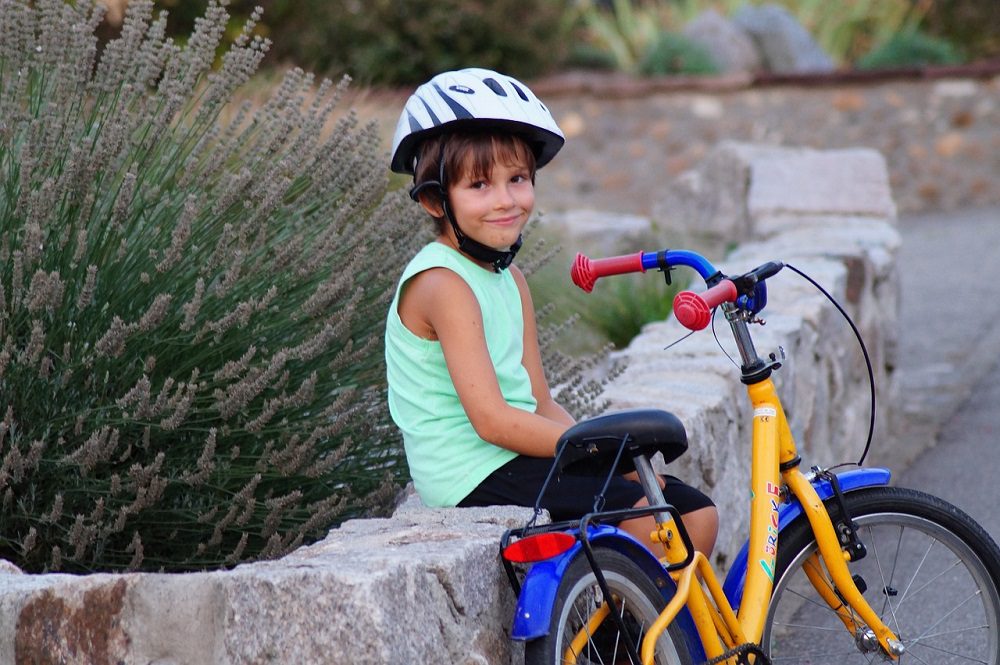For a kid, riding their own bike is an amazing experience! It could bring some sense of autonomy and triumph. Without proper safety precaution, cycling could become a dangerous activity for kids. One mistake could put their life at risk. Thus, every parent should be careful about the safety and learn to fit their helmet properly before going on a ride.
Helmets are designed to protect the head of the rider but they are of no use if you can?t fit the helmet properly. It should stay firmly on your kid?s head to avoid injuries while riding. The right sized and fitted kid?s helmet would work best to protect your kid?s head. Here are the steps to fit a bike helmet for your child.
How to fit a bike helmet – Step-by-step
The helmet must be adjusted to the kid?s head and six easy steps below would help you to do so. First of all, you have to buy the right size helmet for your kid. Helmets come with the range of head circumference. You should check the circumference range and if your child?s head measurement falls in that range, just buy it!
Step 1: Measuring your kid?s head
Take a soft measurement tape to measure the boundary of your kid?s head and you should measure the thickest part of the head or one inch above the eyebrows. There would be a sticker inside the helmet that refers to the range of the size. Compare the measurement that you have got with this range and buy one right size helmet.
Step 2: Place the helmet properly
A helmet that is tilted forward or a low helmet could obstruct your kid?s view when riding. On the other hand, a tilted back or too high helmet couldn?t protect your kid?s forehead or face sufficiently. You should remove any hair clips or thick ponytails from your child?s head as it may cause problems to sit the helmet rightly. Position the helmet exactly on your kid?s top of the head. The width between the eyebrows and the helmet should be two fingers or 1 inch.
Step 3: Make it tight for a snug fit
You would find a dial-adjust knob on the helmet’s back. You have to tighten this knob after you place the helmet on the head correctly. Make the inner cage snug and comfortable by turning the knob. Some of the helmets don?t have dial-adjust knobs but there are pads of various widths for adjusting the inner part of the helmet. You should ask your kid to shake his head back and forth to confirm that you have tightened it correctly.
Step 4: Adjust the side straps
Most of the time we avoid adjusting the side straps but they are important to fit the helmet properly. Moreover, if your kid?s helmet has sewn straps, you could avoid this step. You need to adjust the slider in this way so that the straps form a ?V? shape and the ear should be in the middle of the shape. This would keep your kid?s helmet in the center of the head otherwise, the helmet could slip from the head. You could easily slide down and up the straps to ensure the right position.
Step 5: Adjust the chin strap
You should adjust the chin strap of the helmet loose enough for the kid to buckle and tight enough to fit one finger among the strap and chin.
Step 6: Check regularly
You should never forget to check your kid?s helmet fit before riding. The fit of the helmet could become loose while riding the bike or scooter. Thus, it is important to ensure the safety of your child every time.
Safety tips:
- You should replace the helmet if it has fallen or in a crash. Because the reliability of your kid?s helmet might be damaged
- Check the helmet regularly and if you find any crack in it, just throw it out
- Don?t keep your helmet in the direct heat of the sun and it is best to store it indoors
- Always keep the helmet clean and dirt-free by cleaning it with mild detergent and warm water
Let your child participate in different activities with proper safety. Think first about the safety before training and buying a bike for your kids. Make sure that your kids have elbow and knee pads, proper clothing, hydration packs and right gloves. Teach your kids to take care of their bike and necessary accessories and how to fit the helmet accurately.

As the editor of the blog, She curate insightful content that sparks curiosity and fosters learning. With a passion for storytelling and a keen eye for detail, she strive to bring diverse perspectives and engaging narratives to readers, ensuring every piece informs, inspires, and enriches.










